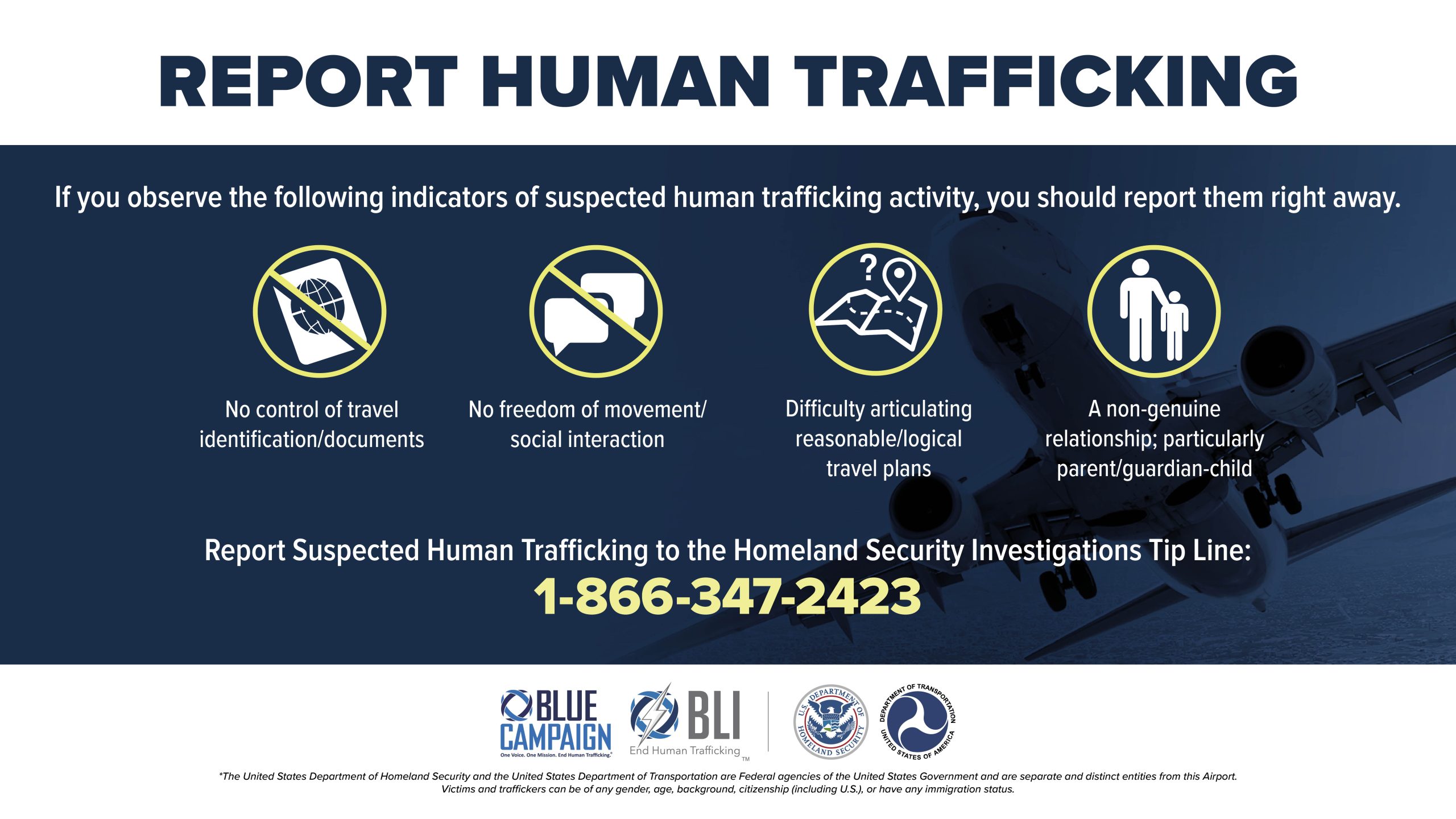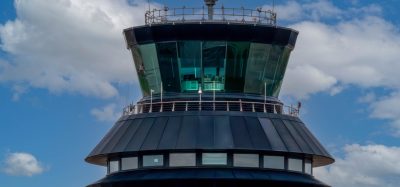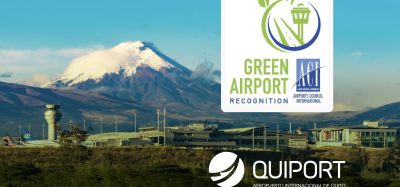A call to action: The critical role of airport leaders in the fight against human trafficking
Posted: 31 July 2023 | Michael E. Camal | No comments yet
Michael E. Camal, Senior Advisor at the U.S. Department of Homeland Security’s (DHS) Blue Campaign, wrote exclusively for International Airport Review in Issue 2 on the importance that airport staff have in detecting and combatting human trafficking.


Airports, often referred to as gateways to the world, may play an unwitting role in facilitating human trafficking. Traffickers and victims regularly pass through their terminals.
In Queens, New York, 39-year-old Sean Price established an online relationship with a 16-year‑old girl from Australia. Price groomed, manipulated, and convinced the girl to fly to California to meet him in-person. He paid for her ticket, met her at the airport, and drove her cross country to his home in New York, sexually exploiting her along the way.
The International Labour Organization estimates that at any given time in 2021, approximately 27.6 million people worldwide had been affected by human trafficking. Law enforcement investigations and survivor testimonials demonstrate that traffickers use both commercial and private air travel to transport victims for forced labour or coerced commercial sex acts. Aviation staff at all levels are in a unique position to encounter potential instances of human trafficking — and prevent them.


What is human trafficking?
Human trafficking involves the use of force, fraud, or coercion to obtain some type of labour or commercial sex act. It can happen anywhere and to anyone; victims span every age, race, gender, sex, ethnicity, nationality, immigration status, and socioeconomic class. Traffickers often take advantage of the most vulnerable, such as by offering fraudulent employment opportunities, false promises of love or a better life, or through inflicting or threatening violence, often toward a victim’s loved ones.
By implementing robust anti-human trafficking programs, airport leaders have the power to make a real difference in the fight against this heinous crime. CREDIT: DHS
Myths about human trafficking are widespread. People often confuse human trafficking with human smuggling, but they are not interchangeable terms. Human smuggling involves the illegal movement of a person across a country’s border. Human trafficking is the exploitation of a person. Sometimes, human smuggling becomes human trafficking after the person arrives in the new country, and when force, fraud, and/or coercion is introduced.
Many people also assume trafficking victims are only women, children, or foreign nationals. The reality is that men, boys, and U.S. citizens are also trafficked. In fact, in a sample of 31,305 victims identified by the National Human Trafficking Hotline, 55% were citizens and Lawful Permanent Residents of the U.S. We should recognise that data on human trafficking does not represent the totality of victims, as many cases go unnoticed, unidentified, and hence, unreported.
What does human trafficking look like?
Human trafficking victims can be seen in highly public settings, especially airports. Awareness of subtle indicators can help airport personnel identify and report potential cases. Victims of human trafficking may:
- Appear to have no control over or possession of their travel identification, money, luggage, and/or other documents
- Have difficulty articulating reasonable/logical travel plans or answering basic questions
- Defer to another person to speak for them, appear to be coached on what to say, or offer responses that seem rehearsed.
Traffickers may:
- Exhibit a non-genuine behavioural relationship such as a guardian or a romantic partner
- Appear to restrict the movement of their co‑traveller
- Purchase last-minute, one-way bookings for other people.
Rather than intervening, airport staff are encouraged to report their observations to the Homeland Security Investigations Tip Line at 1-866‑347-2423 or via a webform.


These indicators do not always lead to cases of human trafficking, but they are based on the real experiences of survivors.
In the Queens case, Price suggested the girl obtain a fake passport, offered to pose as her father to help her get past airport security, and planned an illogical travel route to their destination. Had law enforcement not stepped in, he could have easily trafficked her to other predators. Through an international, multi-agency investigation, HSI special agents and victim assistance specialists recovered the victim and arrested Price. He has since been convicted and sentenced to 35 years in prison.
Regional airports and fixed based operators (FBO) are not immune to the tactics of traffickers. DHS investigated a case where small charter aircraft were used to smuggle Venezuelan women into remote airports in the U.S. Virgin Islands. The traffickers lured the women onto planes with the promise of restaurant work but, upon landing, took the women’s documents and threatened them with deportation unless they engaged in sex acts. The traffickers used charter flights to avoid detection.
One of the most famous uses of private aviation for human trafficking involved sex offender Jeffrey Epstein, who transported his victims via private air travel. Survivors interviewed for the Netflix documentary “Jeffrey Epstein: Filthy Rich” recounted the many indicators that were missed or overlooked by FBO staff, pilots, and other airport workers.
Had more people been trained to recognise the indicators of human trafficking, those situations could have been reported and further exploitation prevented.
Anti-human trafficking efforts in the aviation industry
Human trafficking is a devastating crime that requires an appropriate, aggressive, and victim-centred response. Several federal initiatives have been developed to address this problem, including the White House’s National Action Plan to Combat Human Trafficking, and the recent passage of the Human Trafficking Prevention Act of 2022 which mandates posting contact information for the National Hotline in the restrooms of every U.S. aircraft and airport.
In addition, airports have participated in local task forces, implemented public awareness campaigns, and partnered with local survivor leaders and victim‑serving non-governmental organisations.
The Federal Government’s Blue Lightning Initiative (BLI) is another option that encourages aviation personnel to fight human trafficking. BLI is a joint DHS and U.S. Department of Transportation programme that trains aviation personnel to identify potential human traffickers and victims and report their suspicions to Federal law enforcement. Initially only open to airlines, in 2018, BLI expanded the programme to include airports and now has over 120 partners, including major associations like the American Association of Airport Executives (AAAE) and the National Air Transportation Association (NATA).
BLI hosted a joint awareness webinar with NATA on June 1 2023. To learn more about the work and how to get involved with the campaign, you can register here: NATACS-DHS Blue Campaign Webinar.
Although we are making progress, our work is far from finished. A broader, more cooperative effort among government agencies, regulatory bodies, and airports is needed to effectively combat human trafficking. This should be executed with a sense of urgency. Human trafficking victims and survivors depend on it.


Michael serves as a Senior Advisor at the U.S. Department of Homeland Security’s (DHS) Blue Campaign, the Department’s national public awareness campaign to combat human trafficking. There, he grew its aviation programme, the Blue Lightning Initiative (BLI), by over 600%, expanding the initiative to its first airports, private aviation companies, university aviation departments, and foreign airlines. Since Michael assumed leadership of the programme, BLI has trained over a quarter million frontline staff on trafficking indicators and how to report them.
Michael is a finalist for the 2023 Samuel J. Heyman Service to America Medal. He is originally from New Jersey and holds a Bachelor’s degree in Sociology with a concentration in Criminal Justice from the University of Rhode Island.
Join our free webinar: Beyond silos: How ecosystem thinking elevates the airport experience
In today’s complex aviation landscape, airports are moving beyond siloed operations to embrace a new era of collaboration. This webinar focuses on how leading airports are using ecosystem thinking to adapt, personalize, and continuously improve every touchpoint, boosting both passenger satisfaction and non-aeronautical revenue.
Date: 13 Nov | Time: 10:00 GMT
REGISTER NOW TO SECURE YOUR SPOT
Can’t attend live? No worries – register to receive the recording post-event.
Issue
Related topics
Passenger experience and seamless travel, Safety, Security, Social responsibility, Terminal operations
Related organisations
American Association of Airport Executives (AAAE), Department of Transportation, International Labour Organization (ILO), National Air Transportation Association (NATA), U.S. Department of Homeland Security


















